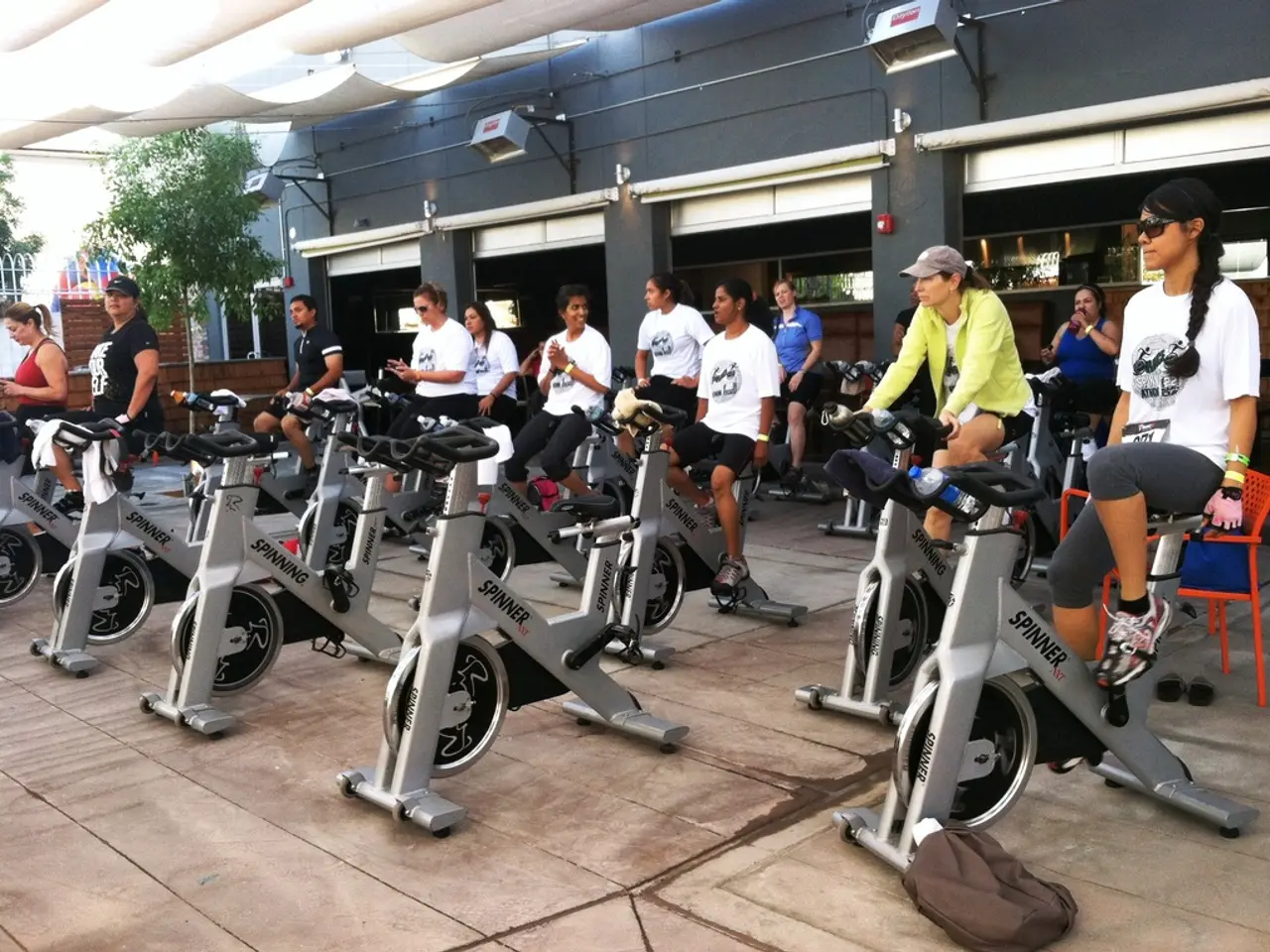Adapting to the scorching heat during Tour de France: Strategies used by cyclists
The upcoming 2025 Tour de France promises to be a challenging event, with temperatures expected to rise as the race progresses. To address the challenges posed by hot weather conditions, the Union Cycliste Internationale (UCI) has implemented a comprehensive High Temperature Protocol.
Professional riders are turning to heat training, even with short sessions under seven days, to help their bodies better regulate temperature changes. This training, which can involve heat suits, conservatories with heaters, or indoor trainers with additional layers of clothing, is becoming increasingly popular among riders.
The body can adapt to the heat with the right stimulus, according to Precision Fuel and Hydration's CEO Andy Blow. This adaptation can increase sweat rates and the levels of blood plasma needed to help the body self-cool.
For those looking to embark on longer, hotter rides, it is advised to hydrate well and use electrolytes. Not rehydrating in time after losing too much liquid can lead to heat stroke, a dangerous condition that can be avoided with proper hydration practices.
In the week before the Tour, riders are focusing on good hydration practices to prevent dehydration in the recovery period pre-race. The first stage of the 2025 Tour de France will take place in Lille at a temperature of 25 degrees.
The UCI's approach combines pre-race heat acclimatization practices supported by teams with on-site safety protocols. Teams are using heat acclimatization methods similar to altitude training, such as exposure to high temperatures before races, which improves physiological adaptations that help riders cope better with heat stress during the Tour.
During the race itself, common strategies to mitigate heat stress include providing cold water bottles and ice cubes to riders. The UCI also implements race-day protocols that may adjust race conditions or restart procedures if temperatures become dangerously high.
The race route will move from West to South, with temperatures expected to rise as it progresses. The UCI's High Temperature Protocol ensures rider safety through race management decisions during extreme heat. It also encourages or allows teams to engage in heat acclimatization training to improve rider resilience.
In addition, the protocol uses cooling interventions during the race, such as cold fluids and ice, to help riders manage their body temperatures. It also implements safety protocols and possible race adjustments as recommended by safety bodies like SafeR.
This comprehensive approach addresses hot weather conditions by preparing riders physiologically and managing environmental risks during the event to maintain performance and safety. The race organizers, UCI, and rider representatives will closely monitor race safety due to high temperatures to ensure a safe and challenging event for all participants.
- Riders, in preparation for the 2025 Tour de France, are adopting heat training, which involves various methods such as heat suits, heaters, and indoor trainers with extra layers, as a means to improve their bodies' ability to regulate temperature changes under hot weather conditions, a common challenge in the upcoming race.
- Aware of the potential dangers of climate change and rising temperatures, the Union Cycliste Internationale (UCI) has introduced a High Temperature Protocol to ensure the health and wellness of both riders and spectators during the Tour de France, utilizing strategies like heat acclimatization practices, cooling interventions, and safety protocols to mitigate heat stress and potential heat-related illnesses like heat stroke.
- As the 2025 Tour de France route moves from Lille in the north to the warmer south, with temperatures expected to rise as the race progresses, environmental-science influences become increasingly relevant, as understanding and adapting to climate change plays a crucial role in maintaining the performance and safety of all participants in this sports event.




